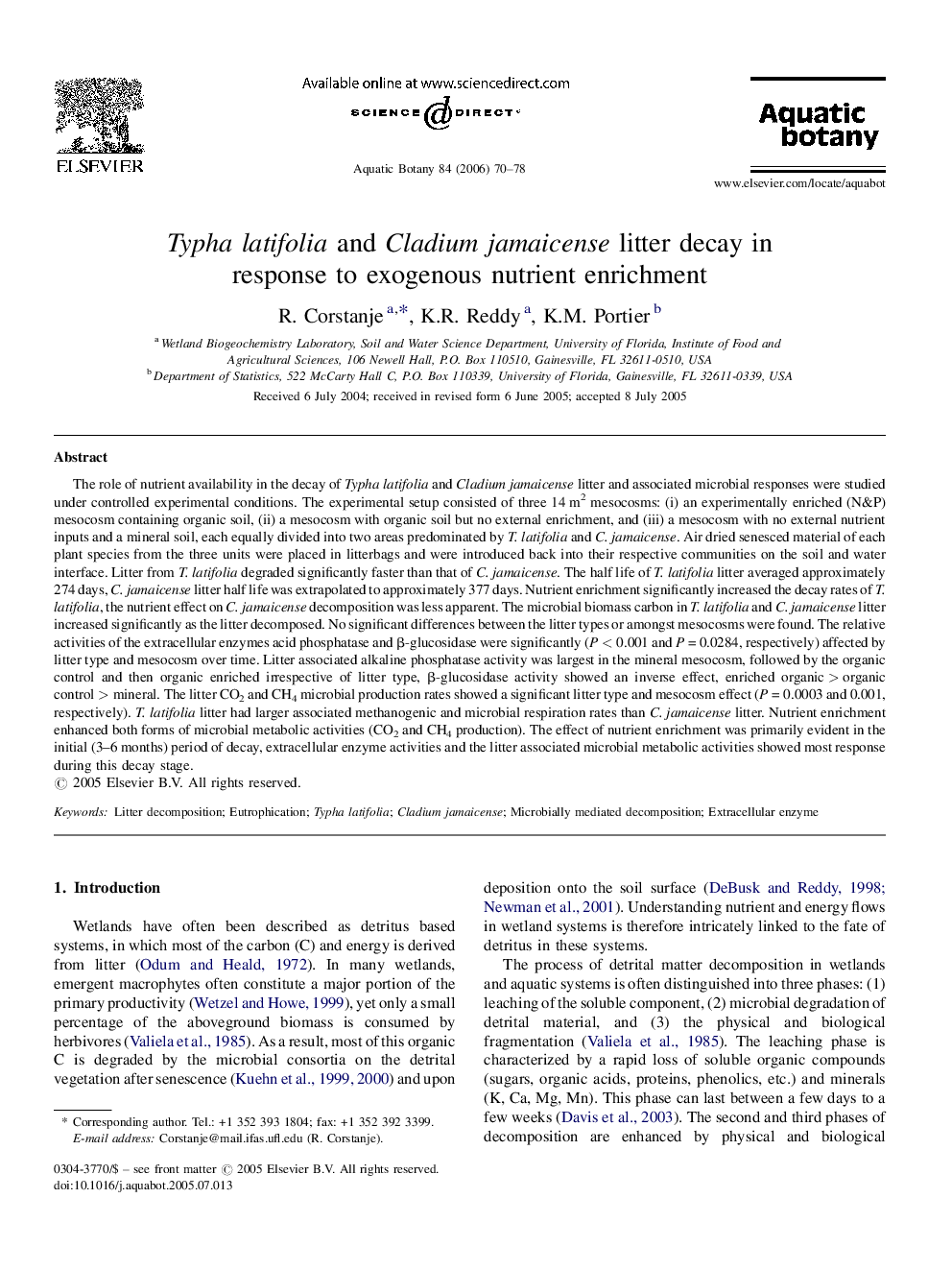| Article ID | Journal | Published Year | Pages | File Type |
|---|---|---|---|---|
| 4528823 | Aquatic Botany | 2006 | 9 Pages |
The role of nutrient availability in the decay of Typha latifolia and Cladium jamaicense litter and associated microbial responses were studied under controlled experimental conditions. The experimental setup consisted of three 14 m2 mesocosms: (i) an experimentally enriched (N&P) mesocosm containing organic soil, (ii) a mesocosm with organic soil but no external enrichment, and (iii) a mesocosm with no external nutrient inputs and a mineral soil, each equally divided into two areas predominated by T. latifolia and C. jamaicense. Air dried senesced material of each plant species from the three units were placed in litterbags and were introduced back into their respective communities on the soil and water interface. Litter from T. latifolia degraded significantly faster than that of C. jamaicense. The half life of T. latifolia litter averaged approximately 274 days, C. jamaicense litter half life was extrapolated to approximately 377 days. Nutrient enrichment significantly increased the decay rates of T. latifolia, the nutrient effect on C. jamaicense decomposition was less apparent. The microbial biomass carbon in T. latifolia and C. jamaicense litter increased significantly as the litter decomposed. No significant differences between the litter types or amongst mesocosms were found. The relative activities of the extracellular enzymes acid phosphatase and β-glucosidase were significantly (P < 0.001 and P = 0.0284, respectively) affected by litter type and mesocosm over time. Litter associated alkaline phosphatase activity was largest in the mineral mesocosm, followed by the organic control and then organic enriched irrespective of litter type, β-glucosidase activity showed an inverse effect, enriched organic > organic control > mineral. The litter CO2 and CH4 microbial production rates showed a significant litter type and mesocosm effect (P = 0.0003 and 0.001, respectively). T. latifolia litter had larger associated methanogenic and microbial respiration rates than C. jamaicense litter. Nutrient enrichment enhanced both forms of microbial metabolic activities (CO2 and CH4 production). The effect of nutrient enrichment was primarily evident in the initial (3–6 months) period of decay, extracellular enzyme activities and the litter associated microbial metabolic activities showed most response during this decay stage.
